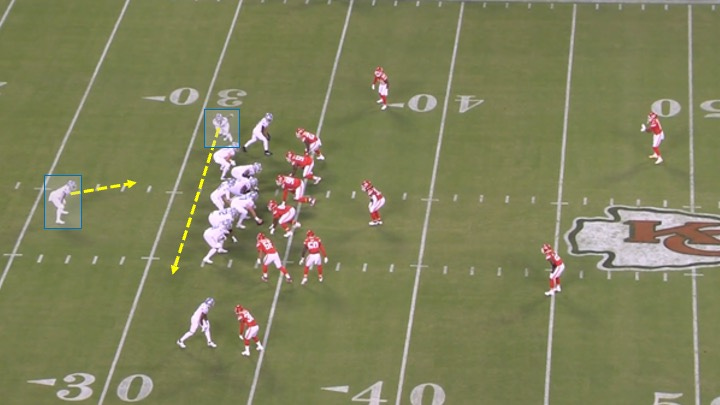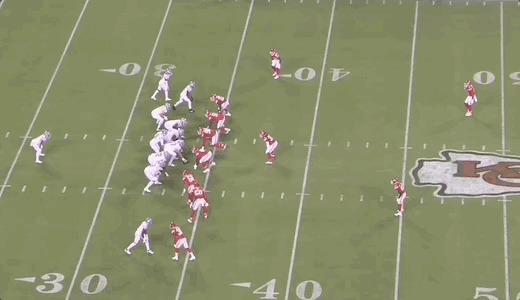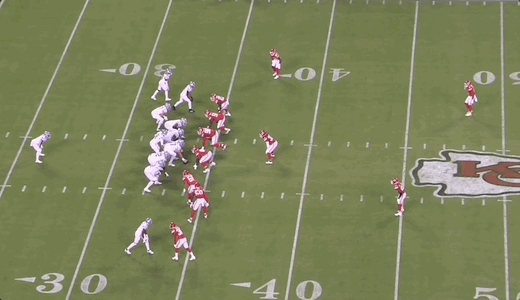What to Expect from Ben Johnson in Chicago
Change is coming to Chicago.
New head coach Ben Johnson brings with him an approach that helped transform the Lions offense from one of the worst in the NFL in 2021 to a top-5 scoring offense in all 3 seasons that he was the OC.
Personnel certainly played a role in the Lions’ success under Johnson. They had arguably the best offensive line in the league and significant weapons at each of the skill positions.
While the Bears might not be quite as talented in these areas, they made some major strides this offseason to at least somewhat resemble what Johnson had in Detroit.
They shored up the offensive line by adding guards Joe Thuney from the Chiefs and Jonah Jackson from the Rams, as well as center Drew Dalman from the Falcons.
They drafted tight end Colston Loveland with the 10th overall pick and can now pair him with Cole Kmet.
Then they took wide receiver Luther Burden in the second round, adding him to a receiving corps that already included D.J. Moore and Rome Odunze.
That roster will be more than enough for Johnson to run the same type of scheme that he preferred with the Lions.
And that’s important, because his scheme is going to help Caleb Williams. Johnson will provide him with a versatile rushing attack that defenses have to account for. He’ll prioritize protection and make sure the most-sacked quarterback in the NFL last season has more time and space to operate.
He’ll use his personnel, formations, and motion to create coverage indicators and ensure Williams knows what the defense is doing pre-snap on a larger percentage of plays. He’ll design and call plays where the decision of where to go with the ball is clear and defined.
Let’s dive into exactly how Johnson can do all of that.
Schemed Explosiveness
The Lions didn’t achieve their explosiveness on offense by spreading it out and chucking it downfield every play. Last season, for instance, despite having the 3rd most pass plays of 20 yards or more, they ranked 30th in average air yards per attempt. It should come as no surprise, then, that they led the NFL in yards after catch per completion.
Those numbers are a great indicator of how the scheme helped generate explosiveness. Safe, short passes that create big plays will be a welcomed sight for Williams and the Bears.
Overall, Johnson takes a balanced approach on offense. Last season, for instance, the Lions were near 50/50 in their pass-run mix (52.2% / 47.8%). The frequency with which they threw the ball ranked 26th in the NFL.
A large reason for that is Johnson’s love for play-action. He clearly wants the run game to be something that the defense fears, which can help make play-action more effective.
The Lions led the NFL last year in play-action frequency as well as % of passing yards coming from play-action. This was a trend throughout Johnson’s tenure in Detroit.
Johnson especially loves to use under-center play-action. The reason is that it takes more time for the play-fake to define itself from under center than it does out of shotgun. And that means defenders trying to read the play and see if it’s a run or pass spend more time waiting than going. That creates larger windows and slower pass rushes, all of which are why Johnson specializes in it.
These are the types of plays that create clear, defined throws for the quarterback as well as easy completions. Both of which will be a necessity for Caleb Williams (as I wrote the other day).
Below is a great example of how Johnson creates those easy completions. This was from Week 1 of the 2023 season in the Lions’ surprise win over the Chiefs.
Detroit used motion and the prospect of two potential ball carriers on this play-action pass:
Notice how the play-fake sucked those Chiefs linebackers up to the line of scrimmage as they were trying to decipher the play:
Here, the under-center play-fake gave the routes more time to get downfield before the defense was aware that this was actually a pass. That created an even greater distance between the primary target and the underneath coverage:
That left no time for those Chiefs linebackers to drop out into coverage once they realized it was a pass. The result was a large window and an easy completion for a big play:
Playing from Under Center
This will be the biggest adjustment/thing to watch in the Williams-Johnson relationship. The Lions, for instance, ranked 2nd last season in under-center frequency. Quarterback Jared Goff also attempted the highest percentage of passes from under center in the NFL. Johnson’s system is predicated on being under center.
That’s not how Williams has played traditionally, in college or during his rookie season. Last year, the Bears ranked just 18th in under-center percentage. However, Williams ranked 34th in the NFL in % of pass attempts from under center (among qualified QBs).
That’s a good indicator that any time the Bears were under center, they were likely running the ball. And from my film study, when they did throw it, it was either a screen or play-action boot. Defenses were prepared for that predictability last season.
That won’t be the case moving forward, although it’s still unclear to what degree. Johnson will likely have to find a happy medium between his preferences and what Williams is comfortable with. The give-and-take between quarterback and play-caller will be on display in this area.





